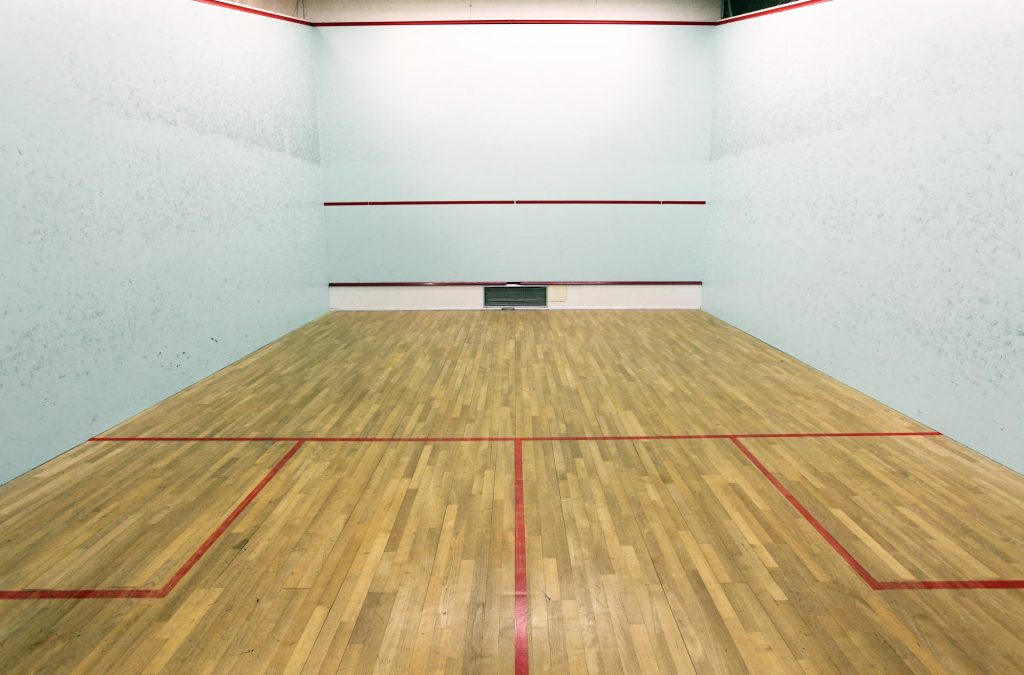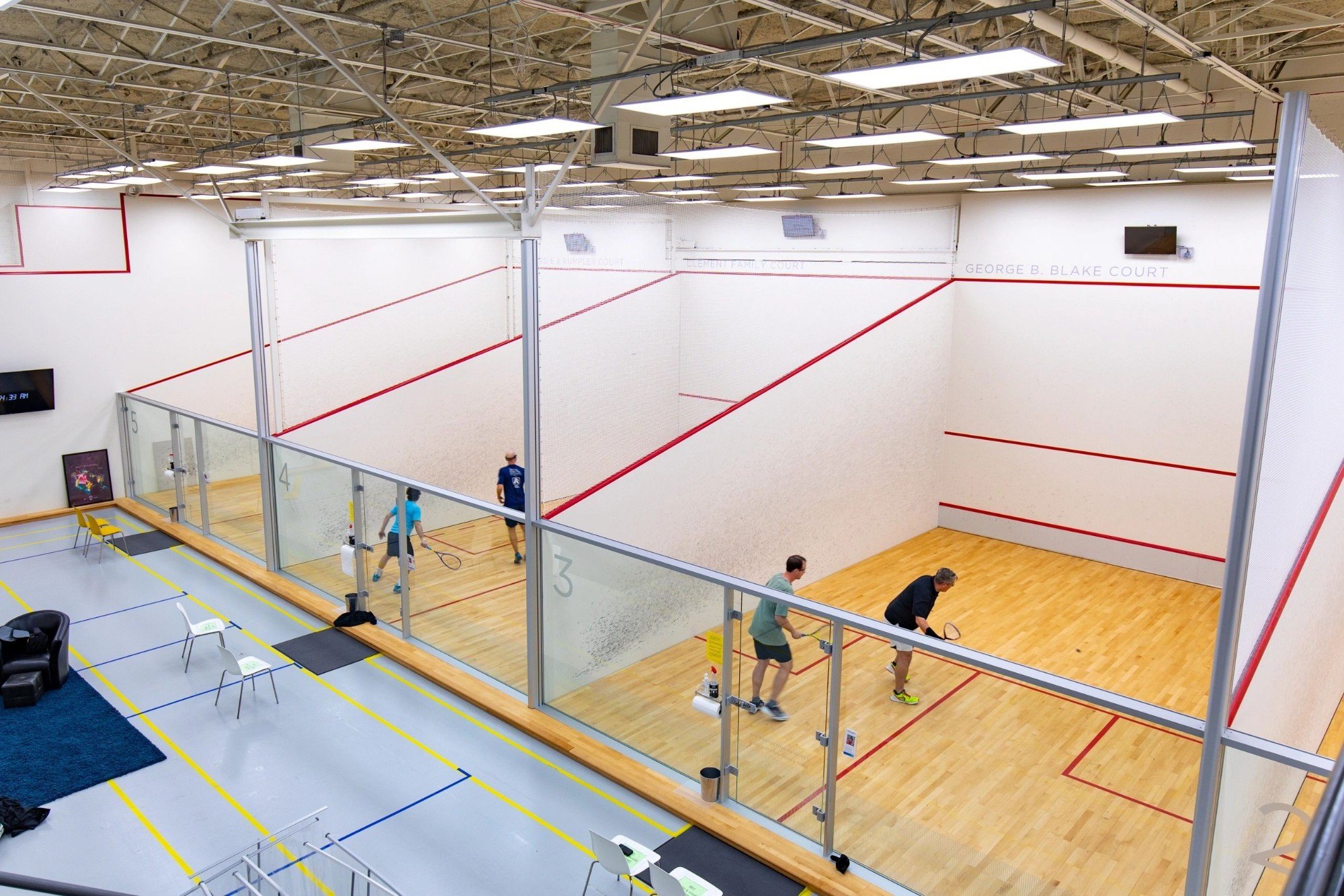Squash is a fast-paced, exhilarating sport that requires agility, precision, and strategy. Whether you’re a beginner or an experienced player, understanding the squash court is essential for maximizing your performance and enjoyment. This guide covers everything you need to know about squash courts, including dimensions, construction, maintenance, and key rules.
1. What is a Squash Court?
A squash court is a specially designed enclosed area where squash is played. It features four walls, a floor, and a ceiling (optional for outdoor courts). The court’s layout is specifically designed to create a controlled environment for fast rallies, strategic play, and proper ball rebound.
Types of Squash Courts
- Standard Squash Courts – Indoor courts with enclosed walls and designated playing zones.
- Glass Squash Courts – Used for professional tournaments; these courts have transparent walls to allow spectators to view the game.
- Outdoor Squash Courts – Less common, these courts may have modified surfaces to withstand weather conditions.
2. Squash Court Dimensions and Layout
Understanding the official squash court dimensions is crucial for players, referees, and court builders.
Official Squash Court Dimensions (According to the World Squash Federation – WSF)
- Length: 9.75 meters (32 feet)
- Width: 6.4 meters (21 feet)
- Height: 5.64 meters (18.5 feet)
- Front Wall Line Height: 4.57 meters (15 feet)
- Service Box Size: 1.6 meters (5.25 feet) square
- Tin Height: 48 cm (19 inches) for professional courts; 43 cm (17 inches) for recreational courts
Each court is marked with red lines that define the playing boundaries, service boxes, and out-of-bounds areas.
3. Squash Court Flooring and Materials
The court floor plays a crucial role in player movement and injury prevention.
Common Flooring Types:
- Hardwood Flooring (Maple, Beech) – Offers high durability, shock absorption, and consistent ball bounce.
- Synthetic Flooring – Used in some recreational courts; provides similar bounce to wood but may differ in traction.
- Outdoor Flooring – Concrete or synthetic materials designed for weather resistance.
Proper maintenance, such as regular cleaning and refinishing, ensures safety and longevity.
4. Squash Court Wall Construction and Markings
The walls significantly impact gameplay by controlling ball rebounds.
Materials Used for Squash Court Walls
- Plaster – The most common material, offering excellent rebound consistency.
- Glass – Used in professional courts for transparency and audience viewing.
- Wood Paneling – Sometimes found in older or non-standard courts.
Court Markings and Their Importance
- Outline: Defines the upper boundary of the playing area.
- Service Line: Marks the area where serves must land.
- Tin: A lower boundary below which shots are considered out.
5. Squash Court Lighting and Ventilation

Lighting Requirements
- Courts require even, glare-free lighting to ensure visibility.
- Recommended lighting intensity: 300-500 lux for standard courts, 750+ lux for professional courts.
Ventilation Considerations
- Proper air circulation prevents excessive humidity and ensures consistent playing conditions.
- HVAC systems or natural airflow methods are used in high-quality courts.
6. How to Choose the Right Squash Court for Your Game
When selecting a squash court, consider:
- Court Surface: A well-maintained wooden floor is preferable.
- Lighting Quality: Look for bright, evenly distributed lighting.
- Wall Conditions: Smooth walls ensure accurate ball rebounds.
- Availability: Check if reservations are needed for peak hours.
7. Maintaining a Squash Court
Regular maintenance extends a court’s lifespan and improves playing conditions.
Maintenance Tips:
- Floor Cleaning: Use approved cleaning products to remove dust and sweat.
- Wall Inspection: Check for cracks or inconsistencies.
- Marking Repainting: Keep court lines visible.
- Lighting Adjustments: Replace faulty bulbs immediately.
8. Squash Court Rules and Etiquette
Basic Rules
- Players must alternate hitting the ball before it bounces twice.
- The ball must hit the front wall before touching other walls.
- Serves must land within the service box.
Court Etiquette
- Wear non-marking shoes to prevent floor damage.
- Avoid obstructing your opponent’s movement.
- Respect court booking times to ensure fair play.
9. Where to Find the Best Squash Courts
If you’re looking for a high-quality squash court, consider:
- Local Sports Clubs & Gyms – Many gyms have well-maintained squash courts.
- University & College Facilities – Often open to students and the public.
- Private Squash Clubs – Offer premium court conditions and coaching.
- Online Directories & Apps – Websites like can help locate top-rated squash courts near you.
Conclusion
Squash courts play a vital role in enhancing the game’s intensity and excitement. Whether you’re choosing a court, maintaining it, or understanding key rules, knowing these details will improve your squash experience. Explore your local squash courts, follow best practices, and enjoy this thrilling sport to the fullest!

